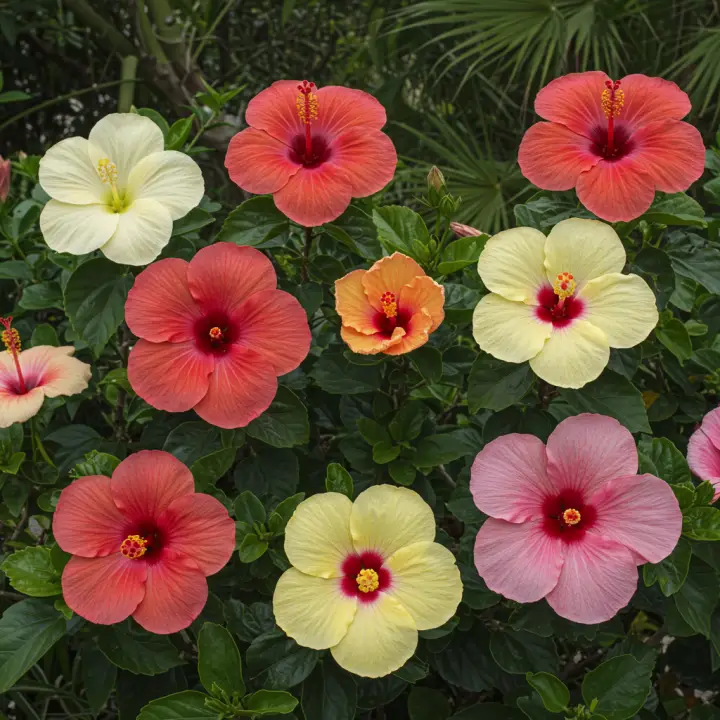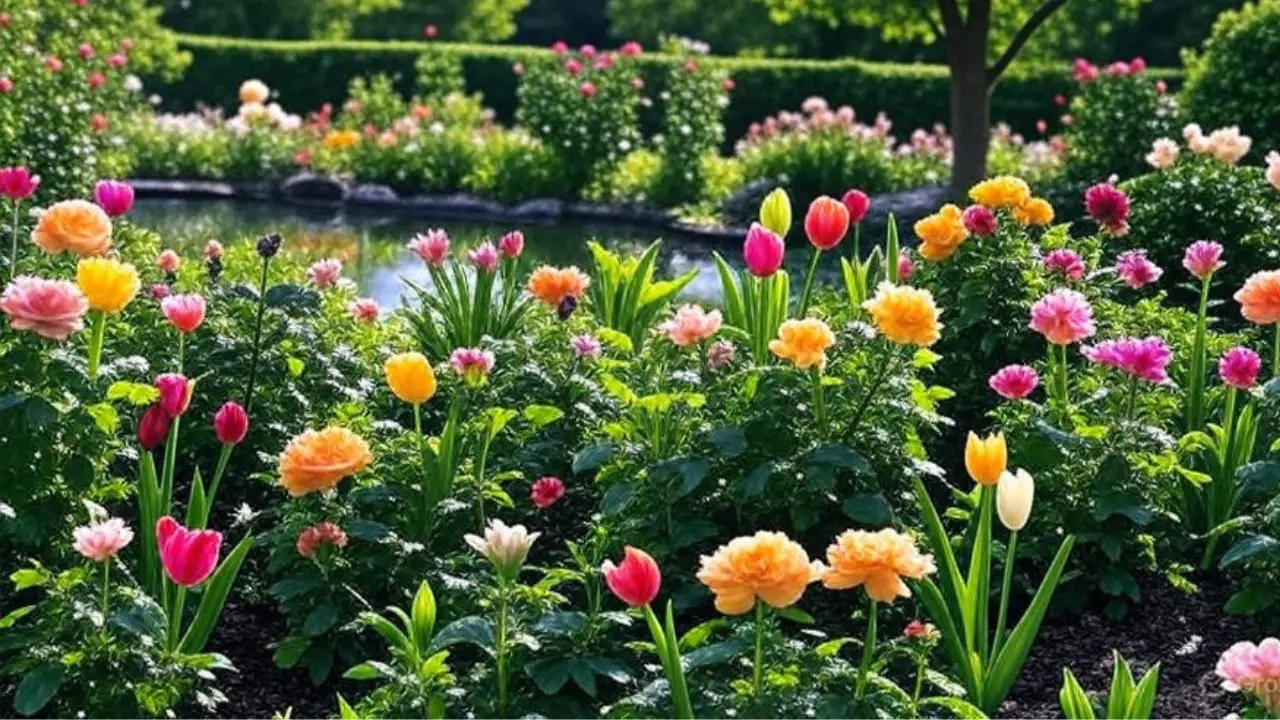Florida’s warm climate is a paradise for hibiscus, offering a spectacular array of varieties that produce breathtaking flowers. This guide explores the best Florida hibiscus varieties for stunning blooms, providing essential tips on selection, care, and how to keep your garden vibrant with these tropical beauties.
Unveiling Florida’s Finest: Top Hibiscus Varieties for Breathtaking Blooms

Florida gardens come alive with color, and few plants capture this vibrancy quite like the hibiscus. Known for their large, showy, and often dinner-plate-sized flowers, hibiscus plants are a favorite among Floridian gardeners. With the state’s generous sunshine and balmy temperatures, numerous hibiscus varieties flourish, transforming landscapes into tropical havens. But with so many options, which ones are truly the superstars for stunning blooms? Let’s dive into the world of Florida hibiscus and discover the best choices to bring unparalleled beauty to your outdoor space.
Why Hibiscus Thrives in the Sunshine State
Florida’s unique climate provides an ideal environment for hibiscus. The warm temperatures, high humidity, and abundant sunshine mimic their native tropical habitats, allowing them to grow vigorously and produce a continuous display of flowers. Well-draining, slightly acidic soil is also key, and many Florida soils, with some amendment, can offer this. Understanding this compatibility is the first step to a thriving hibiscus garden.
Unveiling the Best Florida Hibiscus Varieties for Stunning Blooms
When selecting hibiscus for your Florida garden, you’ll primarily encounter tropical varieties. These are the showstoppers, known for their elaborate colors and large flower sizes.
Tropical Hibiscus: The Stars of Florida Gardens
Tropical hibiscus (Hibiscus rosa-sinensis) are the most popular choice for Florida. They offer an incredible palette of colors, from classic reds and vibrant yellows to exotic oranges, pinks, and multi-toned blends. While sensitive to frost, they thrive throughout most of Florida, especially in USDA Zones 9B-11.
Here are some top varieties that consistently deliver stunning blooms in Florida:
‘Brilliant’ (also known as ‘Fiji’): A timeless classic, ‘Brilliant’ produces abundant, large, single scarlet-red flowers. It’s incredibly vigorous and a reliable bloomer, making it a staple in many Florida gardens.
‘Seminole Pink’: A delightful cultivar known for its cheerful, bright pink single flowers. ‘Seminole Pink’ is renowned for its hardiness and ability to thrive even in less-than-perfect conditions, blooming prolifically.
‘Giant Hawaiian’ Series: These varieties encompass a range of large-flowered hibiscus with various captivating colors, often reaching 6-8 inches across. They are true statement pieces, with options like ‘Kona’ (yellow with a red eye) or ‘Pineapple Express’ (vibrant orange).
‘Cajun’ Series: Developed for their unique, often multi-colored blooms, Cajun hibiscus offer an exciting array of vibrant hues with intricate patterns. They are known for their strong blooming capabilities and eye-catching flowers. Examples include ‘Cajun Blue’ (purple-blue tones) or ‘Cajun Queen’ (mixed pinks, yellows, and oranges).
‘Mrs. B.B. MacMillan’: This traditional favorite boasts very large, ruffled, soft pink flowers that can provide a more subtle yet equally stunning display. It’s a robust grower, ideal for hedges or specimen planting.
‘Fiesta’: As its name suggests, ‘Fiesta’ offers a burst of color with its striking orange and yellow blended flowers, often with a contrasting red eye. It’s a prolific bloomer that adds a festive touch to any landscape.
Hardy Hibiscus: Cold-Tolerant, Yet Still Striking
While tropical hibiscus are largely the star in Florida, hardy hibiscus (Hibiscus moscheutos species and hybrids like ‘Luna’ series) should not be overlooked, especially in North and Central Florida where occasional freezes occur. These herbaceous perennials die back to the ground in winter but return vigorously in spring. They are celebrated for their exceptionally large, dinner-plate-sized flowers, often in shades of white, pink, and red. Though their blooming season is typically shorter than tropical types, the individual blooms are truly spectacular. Examples include ‘Luna Red’, ‘Kopper King’, and ‘Summerific®’ series.
Essential Care Tips for Your Florida Hibiscus
To ensure your hibiscus thrives and produces those stunning blooms consistently, follow these essential care guidelines:
Sunlight and Location
Hibiscus needs at least 6 hours of direct sunlight per day to produce abundant flowers. In South Florida’s intense summer sun, some afternoon shade can prevent scorching, especially for varieties with lighter-colored flowers. Choose a location protected from strong winds, which can damage their large, delicate blooms and branches.
Soil and Watering
Soil: Plant hibiscus in well-draining soil rich in organic matter. They prefer slightly acidic soil (pH 6.0-6.8). If your soil is sandy or heavy clay, amend it with compost or peat moss.
Watering: Consistent moisture is crucial for tropical hibiscus, especially during their active growing and blooming periods. Water deeply when the top inch of soil feels dry. Avoid letting them sit in soggy soil, as this can lead to root rot. Mulching helps retain soil moisture and regulate temperature.
Fertilizing for Abundant Blooms
Hibiscus are heavy feeders. Use a fertilizer specifically formulated for hibiscus or a high-potassium, low-phosphorus fertilizer. Look for N-P-K ratios like 9-3-13 or 10-4-12. Avoid high-phosphorus fertilizers, as they can hinder blooming. Fertilize every 2-4 weeks during the growing season (spring through fall) and reduce frequency in winter.
Pruning for Shape and Flora
Pruning encourages bushier growth, more flowers, and maintains a desirable shape.
When: The best time for major pruning in Florida is late winter or early spring, before new growth begins. Light shaping can be done anytime.
How: Remove dead, diseased, or crossing branches. Cut back leggy stems to encourage branching. For a denser plant, trim back branches by about one-third.
Protecting Your Hibiscus: Common Pests and Diseases
Even the most stunning hibiscus can face challenges. Being proactive helps keep them healthy:
Pests: Common culprits include aphids, whiteflies, mealybugs, and spider mites. Inspect your plants regularly. Small infestations can often be treated with a strong spray of water or insecticidal soap. Neem oil is also an effective organic solution.
Diseases: Fungal diseases like leaf spot or root rot can occur, often due to excessive moisture or poor air circulation. Ensure good drainage and space plants adequately. Remove affected leaves promptly.
FAQs Section
Q: How often should I water my Florida hibiscus?
A: Water deeply when the top inch of soil feels dry. This often means daily during hot, dry periods in summer, and less frequently in cooler months or during rainy seasons. Always check the soil moisture before watering.
Q: Do hibiscus plants need full sun in Florida?
A: Yes, tropical hibiscus generally need at least 6 hours of direct sun daily for optimal blooming. In the hottest parts of South Florida, a little afternoon shade can be beneficial to prevent leaf scorch.
Q: When is the best time to prune hibiscus in Florida?
A: The ideal time for major pruning is late winter to early spring (February-March), before new growth emerges. Light shaping and deadheading can be done throughout the year.
Q: Why are my hibiscus leaves turning yellow?
A: Yellowing leaves can indicate several issues, including overwatering or underwatering, nutrient deficiencies (especially iron or magnesium), pest infestations, or even cold stress. Check your watering routine and inspect for pests first.
Q: Can hibiscus grow in pots in Florida?
A: Absolutely! Hibiscus grows very well in containers, which offers flexibility in placement and crucial protection during unexpected cold snaps. Choose a large pot with good drainage and use a high-quality potting mix.
Conclusion
Bringing the vibrant beauty of hibiscus to your Florida garden is a rewarding experience. By selecting the best Florida hibiscus varieties and providing them with proper care—plenty of sun, consistent moisture, appropriate fertilization, and timely pruning—you can enjoy a continuous display of stunning blooms. Whether you opt for the classic ‘Brilliant’ red or the exotic colors of a ‘Cajun’ series, your efforts will be amply rewarded with a slice of tropical paradise right in your own backyard. Get ready to transform your landscape into a breathtaking showcase of floral artistry!

